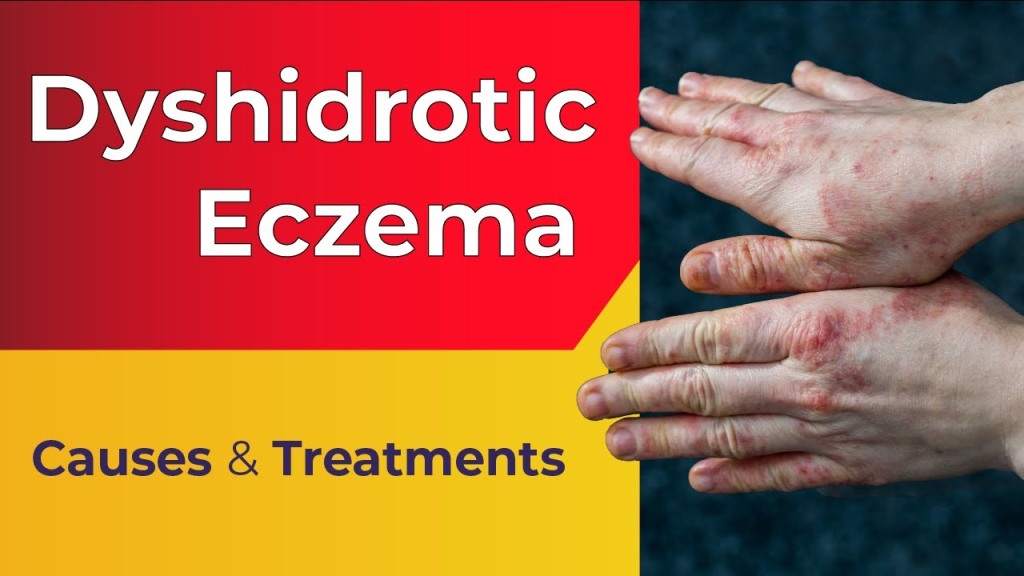Dyshidrotic Eczema: This common form of eczema causes small, intense itchy blisters on the fingers, toes, palms and soles of the feet. This is twice that of women in men.
Due to the association with seasonal allergies, dyshydrotic eczema blisters are known to burst more frequently in the spring allergy season. The blisters can last up to three weeks before drying out and can sometimes be large and painful. As the blisters dry, they can turn into a skin crack or leave the skin feeling thick and spongy, especially if you are scratching the area.

Source “Google”
Doctors may also refer to Dyshidrotic eczema:
- Cheiropompholyx
- dyshidrosis
- Leg-arm eczema
- Pompholyx
- Vesicular eczema
- Palmoplant eczema
There is no cure for Dyshidrotic eczema, but the good news is that it is manageable in many cases. And like all types of conditions, it is not contagious. You cannot “catch” dysenteric eczema from another person, or pass it on to someone else.
Also Read: How to Cure Eczema on Hands
What does dicidrotic eczema look like?
All types of eczema cause itching and redness. But some, such as Dyshidrotic eczema, look and function slightly differently than others. It is possible to have dyshydrotic eczema and another form of eczema, such as contact dermatitis, at the same time.
Symptoms of Dyshidrotic eczema include:
- Deep sores on the soles of the feet, feet, palms and soles of the feet
- itching
- redness
- flaking
- Crusted, chapped skin
- Pain
It is important to understand what type of eczema you may have and also your symptoms and triggers, so that you can better treat and manage it. The only way to ensure that you have Dyshidrotic eczema is to make an appointment with your doctor.
What causes Dyshidrotic eczema?
Dyshidrotic eczema usually appears in adults between 40 and 20 years of age, but it can also affect children. People with contact dermatitis, atopic dermatitis or hay fever are at greater risk of developing Dyshidrotic eczema. Dyshidrotic eczema tends to run in families, so if you have a close relative with this form of eczema, your chances of developing it also increase.
Some common triggers for Dyshidrotic eczema are:
- Tension
- Pollen
- Excessive sweating or prolonged exposure to water
- Nickel in jewelry, keys, cell phones, eyeglass frames, stainless steel items, and everyday items like metal buttons, snaps and zippers
- Cocoa, chocolate, soy beans, oatmeal, nuts, almonds, fresh and dried legumes, and nickel in canned foods
- Cobalt in everyday items such as cobalt-blue dishware, paint and varnish; Some medical equipment; Jewelry; And metal pieces, buttons and zippers
- Cobalt in foods such as clams, fish, leafy green vegetables, liver, milk, nuts, oyster and red meat
- Chromium salts are used in the manufacture of cement, mortar, leather, paint and anticorrosive
Remedies for Dyshidrotic eczema
At-home treatment for Dyshidrotic eczema involves soaking hands and feet in cold water or applying compressed for 15 minutes followed by a rich moisturizer or a skin barrier repair cream two to four times a day.
For more severe cases of Dyshidrotic eczema, a provider may prescribe topical steroids, TCI or phototherapy. Additionally, the provider may dry the blisters in the office, and / or give a dose of Botox in the hands and feet to reduce sweating and wetting, which are known as triggers for this form of eczema.
Dyshidrotic eczema has a tendency to become infected, which can delay the symptoms to clear up. If you suspect that you have an infection in the area where the eczema appears, make an appointment with your provider.
Atopic dermatitis and contact dermatitis can look like dyshidrotic eczema.
Tips for managing Dyshidrotic eczema
There is no sure way to prevent Dyshidrotic eczema. However, good skin care and moisturizing can help make your skin strong against irritation, so that it does not flare up, or deteriorate. The most important thing to remember is to be consistent.
Some basic things that you can do to help control your dyshydrotic eczema:
- Wash the affected skin with a mild cleanser and gently pat
- When you wash your hands, remove the ring and other ornaments so that there is no water on your skin.
- Moisturize after washing hands / feet or by immersing in water
- Moisturize frequently during the day when your skin starts to dry
- Wash your hands or feet immediately after exposure to a potential trigger
- Learn to manage stress as it is a common trigger of dyshydrotic eczema.
- When possible, avoid rapid changes in temperature and activities that make you sweat.
- Keep your nails short to prevent scratching the skin
Treatment for Dyshidrotic ECZEMA
That’s right, you’ll be able to download every little thing for less than an one-time $30 payment. And also, if you have any kind of inquiries, I’m right here to help! Simply email me at the address listed below and also I ‘d be happy to return to you with a response as quickly as I can!
You will get instant accessibility to this finest marketing overview even if it’s 3 in the morning
Eczema Free For You provides you response to useful, homemade as well as all-natural options, that any person living in any kind of part of the globe can easily execute!
It likewise features a 60 Day, 100% Money Back Assurance – because we are sure that you will not regret your decision. Click Here

